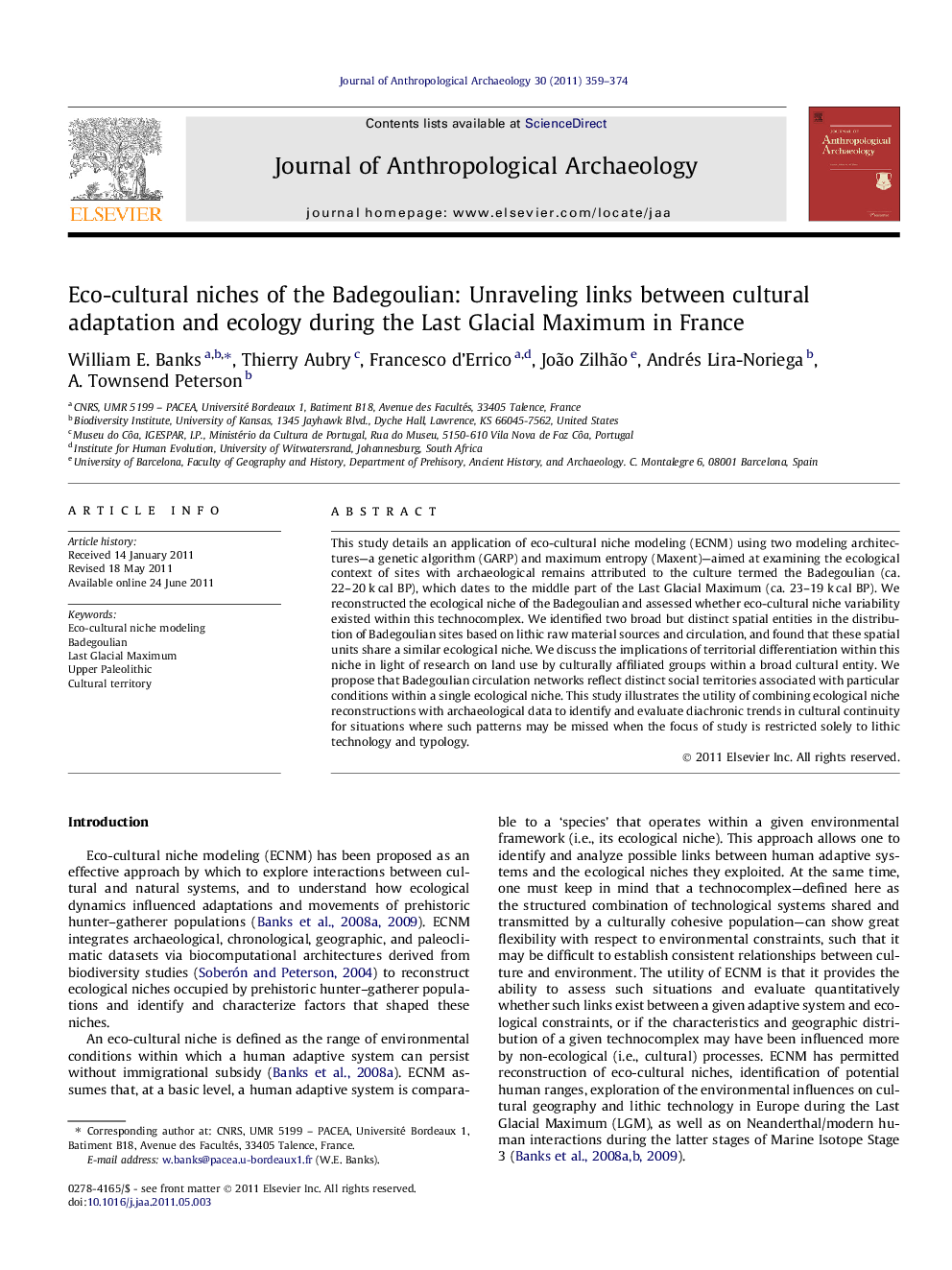| Article ID | Journal | Published Year | Pages | File Type |
|---|---|---|---|---|
| 1035045 | Journal of Anthropological Archaeology | 2011 | 16 Pages |
This study details an application of eco-cultural niche modeling (ECNM) using two modeling architectures—a genetic algorithm (GARP) and maximum entropy (Maxent)—aimed at examining the ecological context of sites with archaeological remains attributed to the culture termed the Badegoulian (ca. 22–20 k cal BP), which dates to the middle part of the Last Glacial Maximum (ca. 23–19 k cal BP). We reconstructed the ecological niche of the Badegoulian and assessed whether eco-cultural niche variability existed within this technocomplex. We identified two broad but distinct spatial entities in the distribution of Badegoulian sites based on lithic raw material sources and circulation, and found that these spatial units share a similar ecological niche. We discuss the implications of territorial differentiation within this niche in light of research on land use by culturally affiliated groups within a broad cultural entity. We propose that Badegoulian circulation networks reflect distinct social territories associated with particular conditions within a single ecological niche. This study illustrates the utility of combining ecological niche reconstructions with archaeological data to identify and evaluate diachronic trends in cultural continuity for situations where such patterns may be missed when the focus of study is restricted solely to lithic technology and typology.
► We apply predictive modeling architectures to the Badegoulian technocomplex. ► We identified two Badegoulian lithic raw material circulation networks. ► We reconstructed the eco-cultural niche for each Badegoulian territory. ► We evaluated the ecological contexts of these territories. ► We discuss the implications of territorial differentiation within an ecological niche.
